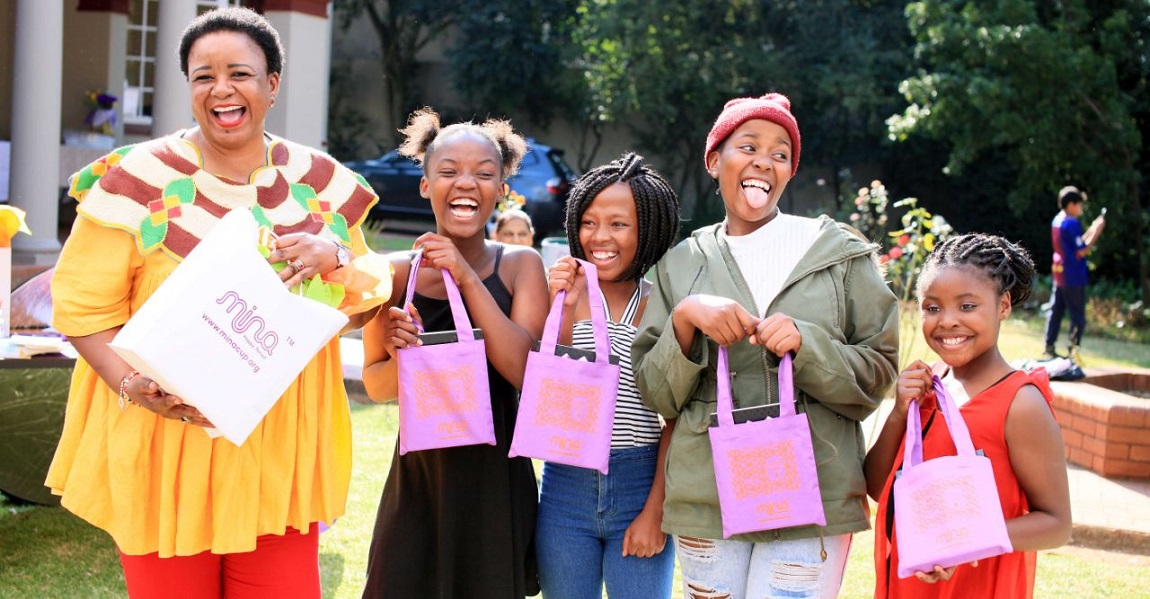Did you know it takes 500 years for a menstrual pad to biodegrade? Besides that, the cost and inaccessibility of menstrual health products means that children around the world have to miss school when they are menstruating. The Mina Foundation offers an environmentally sustainable and cost-effective solution to this conundrum with its menstruation cups. For Menstrual Hygiene Day, we spoke to the Mina facilitators about menstrual hygiene, the environment and changemaking.
What is the importance of Menstrual Hygiene Day?
The importance of Menstrual Hygiene Day is to highlight the plight of women throughout the world who are treated unfairly because their body is doing one of the most natural things and that’s menstruating. It’s also to break those taboos and stigmas attached to menstruation.
How does Mina fit into menstrual hygiene?
Our menstrual cup product is represented by Mina: a little purple girl who is active, she’s an African ambassador, she’s made in South Africa. How Mina integrates into menstrual health is to try to find sustainable solutions to menstruation that is not going to be too expensive and is going to be eco-friendly, which is a huge problem at the moment in terms of menstrual waste.
Sounds great. What exactly is a menstrual cup?
It’s a small rubber cup that is inserted into the vagina to collect your menstrual fluids. Our menstrual cup is made of 100% medical grade silicone. Obviously it is made in South Africa.
Why should we use menstrual cups instead of other products like pads or tampons?
You can get Toxic Shock Syndrome from using tampons. It is more unsanitary to use a pad because pads have toxins, bleach, and all sorts of fragrances so there’s a lot of chemicals in pads. It takes 500 years for a pad to biodegrade meaning your pad will be here longer than you will be here. That’s another reason why Mina is so important in terms of her impact on the environment.
Mina is reusable – you can use her for five years. You can make it longer but for hygienic purposes we say five years. You never have to worry about buying another product. This is probably why it’s not that widely available, because no one makes money off of a menstrual cup if it’s only going to be sold once every five years.
Does this mean Mina is cost effective?
Mina is about R400 and available at Wellness Warehouse. Every time you buy a menstrual cup, another one gets donated to the Mina foundation to go to needy girls. Unfortunately, because VAT went up, the price of the menstrual cup also had to go up. But we give it away to our schools for free. You can also contact us directly.
Tell us a little bit about your initiative to work with university students.
We’re trying to raise awareness around university students struggling to make ends meet in general. Menstrual products are just another thing to add to the growing strain of students. On our own, we have a funding campaign which we’ve been driving for the past 40 days. We’ve already reached R25 000 and we’re hoping to reach as much as we can get. That money will be donated to as many university women as possible just to relieve them from worrying about buying menstrual products. We’re hoping to work with other universities as well in the future. We’re also working with organisations and will be distributing menstrual cups in the future.










